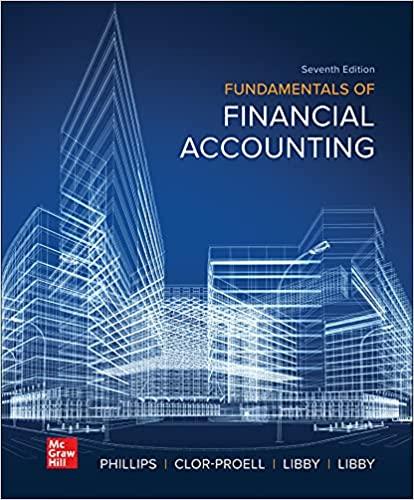Question
1. 2.1 Which of these statements is not one of the financial statements? A. income statement B. balance sheet C. statement of cash flows D.
1. 2.1 Which of these statements is not one of the financial statements?
A. income statement
B. balance sheet
C. statement of cash flows
D. statement of owner investments
2. 2.1 Stakeholders are less likely to include which of the following groups?
A. owners
B. employees
C. community leaders
D. competitors
3. 2.1 Identify the correct components of the income statement.
A. revenues, losses, expenses, and gains
B. assets, liabilities, and owner's equity
C. revenues, expenses, investments by owners, distributions to owners
D. assets, liabilities, and dividends
4. 2.1 The balance sheet lists which of the following?
A. assets, liabilities, and owners' equity
B. revenues, expenses, gains, and losses
C. assets, liabilities, and investments by owners
D. revenues, expenses, gains, and distributions to owners
5. 2.1 Assume a company has a $350 credit (not cash) sale. How would the transaction appear if the business uses accrual accounting?
A. $350 would show up on the balance sheet as a sale.
B. $350 would show up on the income statement as a sale.
C. $350 would show up on the statement of cash flows as a cash outflow.
D. The transaction would not be reported because the cash was not exchanged.
6. 2.2 Which of the following statements is true?
A. Tangible assets lack physical substance.
B. Tangible assets will be consumed in a year or less.
C. Tangible assets have physical substance.
D. Tangible assets will be consumed in over a year.
7. 2.2 Owners have no personal liability under which legal business structure?
A. a corporation
B. a partnership
C. a sole proprietorship
D. There is liability in every legal business structure.
8. 2.2 The accounting equation is expressed as ________.
A. Assets + Liabilities = Owner's Equity
B. Assets - Noncurrent Assets = Liabilities
C. Assets = Liabilities + Investments by Owners
D. Assets = Liabilities + Owner's Equity
9. 2.2 Which of the following decreases owner's equity?
A. investments by owners
B. losses
C. gains
D. short-term loans
10. 2.2 Exchanges of assets for assets have what effect on equity?
A. increase equity
B. may have no impact on equity
C. decrease equity
D. There is no relationship between assets and equity.
11. 2.2 All of the following increase owner's equity except for which one?
A. gains
B. investments by owners
C. revenues
D. acquisitions of assets by incurring liabilities
12. 2.3 Which of the following is not an element of the financial statements?
A. future potential sales price of inventory
B. assets
C. liabilities
D. equity
13. 2.3 Which of the following is the correct order of preparing the financial statements?
A. income statement, statement of cash flows, balance sheet, statement of owner's equity
B. income statement, statement of owner's equity, balance sheet, statement of cash flows
C. income statement, balance sheet, statement of owner's equity, statement of cash flows
D. income statement, balance sheet, statement of cash flows, statement of owner's equity
14. 2.3 The three heading lines of financial statements typically include which of the following?
A. company, statement title, time period of report
B. company headquarters, statement title, name of preparer
C. statement title, time period of report, name of preparer
D. name of auditor, statement title, fiscal year end
15. 2.3 Which financial statement shows the financial performance of the company on a cash basis?
A. balance sheet
B. statement of owner's equity
C. statement of cash flows
D. income statement
16. 2.3 Which financial statement shows the financial position of the company?
A. balance sheet
B. statement of owner's equity
C. statement of cash flows
D. income statement
17. 2.3 Working capital is an indication of the firm's ________.
A. asset utilization
B. amount of noncurrent liabilities
C. liquidity
D. amount of noncurrent assets
Step by Step Solution
There are 3 Steps involved in it
Step: 1

Get Instant Access to Expert-Tailored Solutions
See step-by-step solutions with expert insights and AI powered tools for academic success
Step: 2

Step: 3

Ace Your Homework with AI
Get the answers you need in no time with our AI-driven, step-by-step assistance
Get Started


